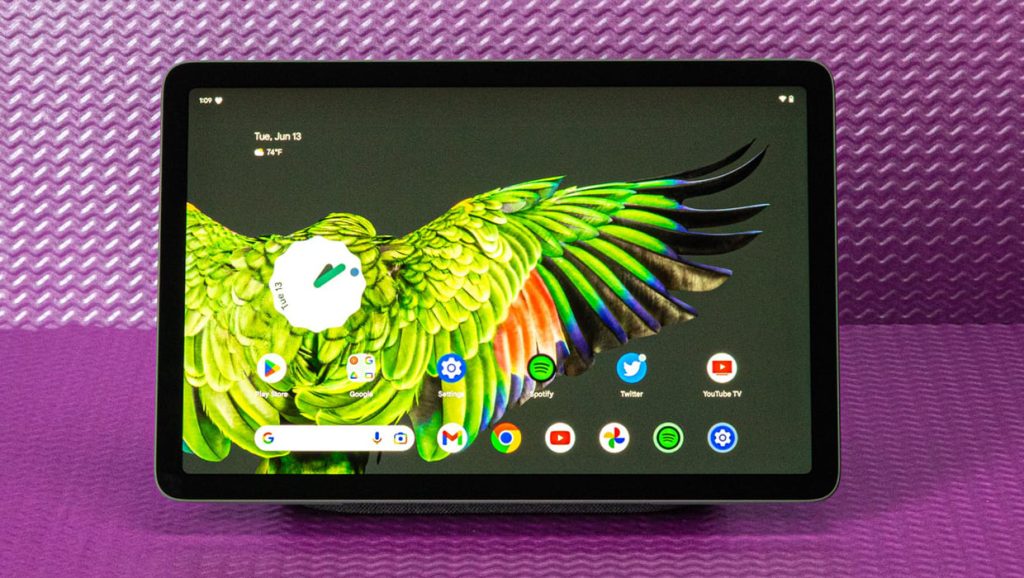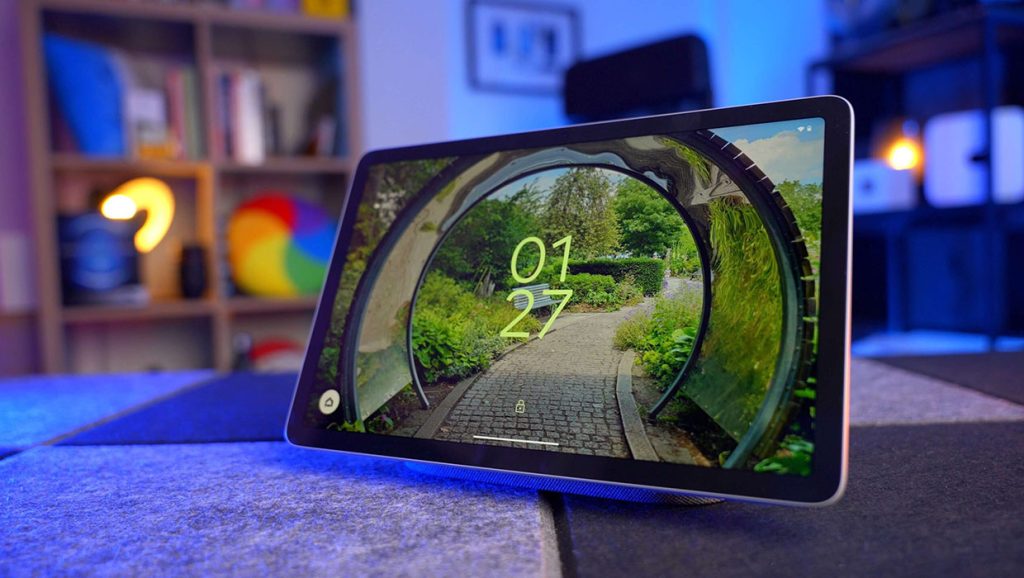Google Pixel Tablet review: the dock makes all the difference
Google has had a checkered past when it comes to tablets, with previous attempts falling short of expectations. However, the Google Pixel Tablet takes a unique approach, focusing on delivering an exceptional media consumption experience without trying to replace your laptop or redefine computing. Priced at $499, the tablet’s defining feature is the inclusion of a speaker dock that transforms it into a smart display and charging station.
Gazelle.com – Buy Smart. Sell Easy.
Trade in your old phone, tablet, or laptop at Gazelle.com and get instant cash offers.
Or shop certified pre-owned devices that look and work like new — all fully tested and guaranteed.
Simple. Secure. Sustainable.
Design and Display:
The Google Pixel Tablet sports a simplistic yet elegant design, featuring an 11-inch screen with slim bezels that offer an immersive viewing experience. The device is constructed with a combination of aluminum and soft-touch materials, resulting in a well-built and premium feel. With color options including off white, soft pink, and dark green, users can choose a style that suits their preferences. The tablet’s rounded sides and comfortable form factor make it easy to hold in both portrait and landscape orientations.
The tablet’s LCD display boasts a sharp 2560 x 1600 resolution, vibrant colors, wide viewing angles, and an absence of visible air gaps. Although it may not match the brightness and contrast levels of OLED or Mini LED screens found in competing devices, the Pixel Tablet’s display is more than capable of delivering an enjoyable multimedia experience. However, the 16:10 aspect ratio, while suitable for video consumption, may not be ideal for reading-intensive tasks due to the more rectangular shape compared to the 4:3 aspect ratio of an iPad.

Audio and Camera:
Equipped with four speakers (two on each side), the Google Pixel Tablet delivers clear audio with noticeable stereo separation. While the tablet’s audio performance is commendable, it lacks a headphone jack, necessitating the use of Bluetooth or USB-C dongles for private audio. This aligns with the industry trend but may be inconvenient for some users, especially those seeking a communal and user-friendly device.
The tablet’s 8-megapixel webcam provides satisfactory video quality for one-on-one video calls. However, it may not be optimal for larger group meetings, as some video conferencing platforms may restrict the number of visible participants. The rear camera, although functional for basic tasks such as document scanning, is not comparable to dedicated camera devices, and users will likely rely on their smartphones for higher-quality photography.
Performance and Software:
Powered by Google’s Tensor G2 processor, along with 8GB of RAM and either 128GB or 256GB of storage, the Google Pixel Tablet delivers responsive performance across various tasks. Whether it’s gaming, streaming videos, or navigating the user interface, the tablet performs admirably. However, it tends to heat up even during basic operations, and its battery life falls slightly below the advertised 12 hours. Users can expect around six to eight hours of usage, which may necessitate more frequent charging. However, the included speaker dock provides a convenient and practical solution by serving as a charging station when the tablet is not in use.
Running on Android software, the Pixel Tablet offers a familiar interface, customizable with various colors and widgets. Google has optimized its own suite of apps, including Chrome, Maps, Gmail, Google News, Photos, Files, and the Google Home app, for the tablet’s larger display. However, many third-party apps still lack proper optimization for tablet-sized screens, leading to stretched-out layouts or unused space. While the Pixel Tablet may not offer advanced multitasking features or app-specific optimizations, it excels as a media consumption device where full-screen viewing takes precedence.
The Versatile Dock:
The Pixel Tablet’s standout feature is undoubtedly the included speaker dock. The dock serves as a charging station for the tablet and seamlessly transfers audio playback from the tablet’s built-in speakers to the dock’s superior speaker system. This effortless transition allows users to enjoy enhanced audio quality when they place the tablet on the dock. Furthermore, the dock functions as a cast target, enabling users to stream video or audio from their smartphones to the docked tablet.

When docked, the Pixel Tablet transforms into a smart display, resembling Google’s Nest Hub Max. With three far-field microphones and voice command support, the tablet can respond to “Hey Google” prompts from across the room. Users can receive well-formatted answers to queries, display screensavers of Google Photos albums, control smart home devices, set timers, and manage grocery lists. Although the tablet lacks some features found in the Nest Hub, such as recipe guidance and motion-based control, it offers a compelling smart display experience for users looking to integrate the tablet into their smart home ecosystem.
Limitations and Pricing:
Despite its unique features and versatility, the Google Pixel Tablet does face some limitations. App optimization for larger screens remains a challenge, with many third-party apps lacking tablet-specific designs. Users may encounter stretched-out layouts or empty spaces, impacting the overall user experience. Additionally, the tablet’s battery life falls short of expectations, requiring more frequent charging sessions.
Priced at $499, the Pixel Tablet may appear expensive compared to alternatives like the iPad or the Nest Hub Max. While the tablet provides value for users already invested in Google’s ecosystem or seeking a versatile device with smart display capabilities, it faces strong competition from more affordable options. Potential buyers should consider their specific needs and usage patterns before deciding on the Pixel Tablet.
The Google Pixel Tablet offers a focused approach to tablet usage, prioritizing media consumption and casual web browsing. With its sleek design, vibrant display, and responsive performance, it delivers an enjoyable experience for everyday tasks. However, its standout feature is undoubtedly the versatile speaker dock, which serves as a charging station, enhances audio playback, and transforms the tablet into a smart display. This unique combination sets the Pixel Tablet apart from its competitors and provides users with a seamless transition between tablet and smart display functionality.
While the tablet faces challenges regarding app optimization and battery life, it remains a compelling option for users seeking a device that excels at media consumption and integrates well with their smart home ecosystem.

-850x550.jpg)